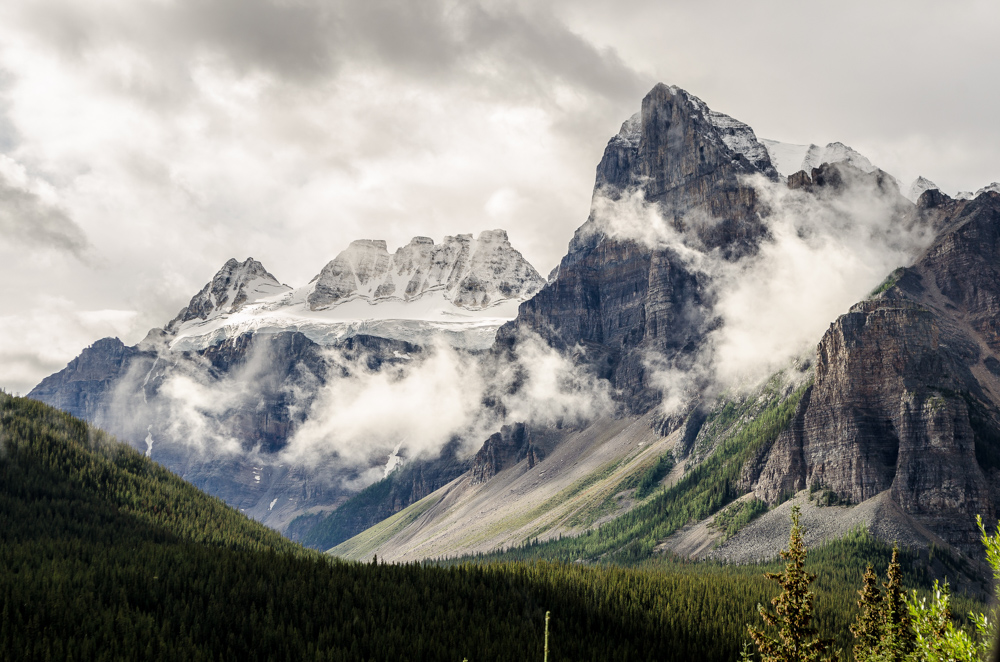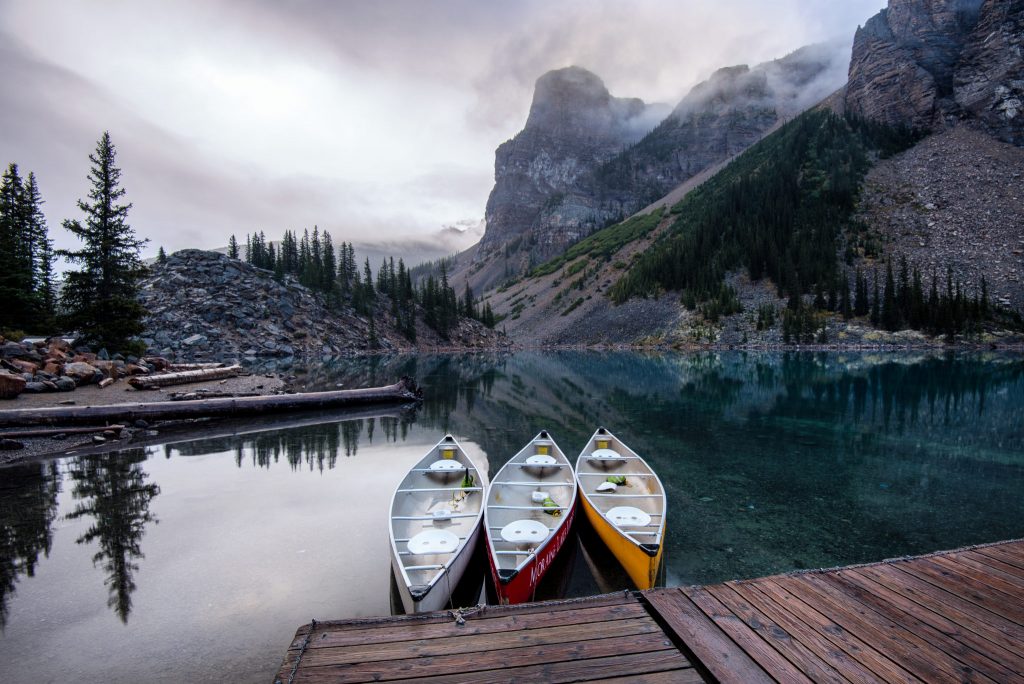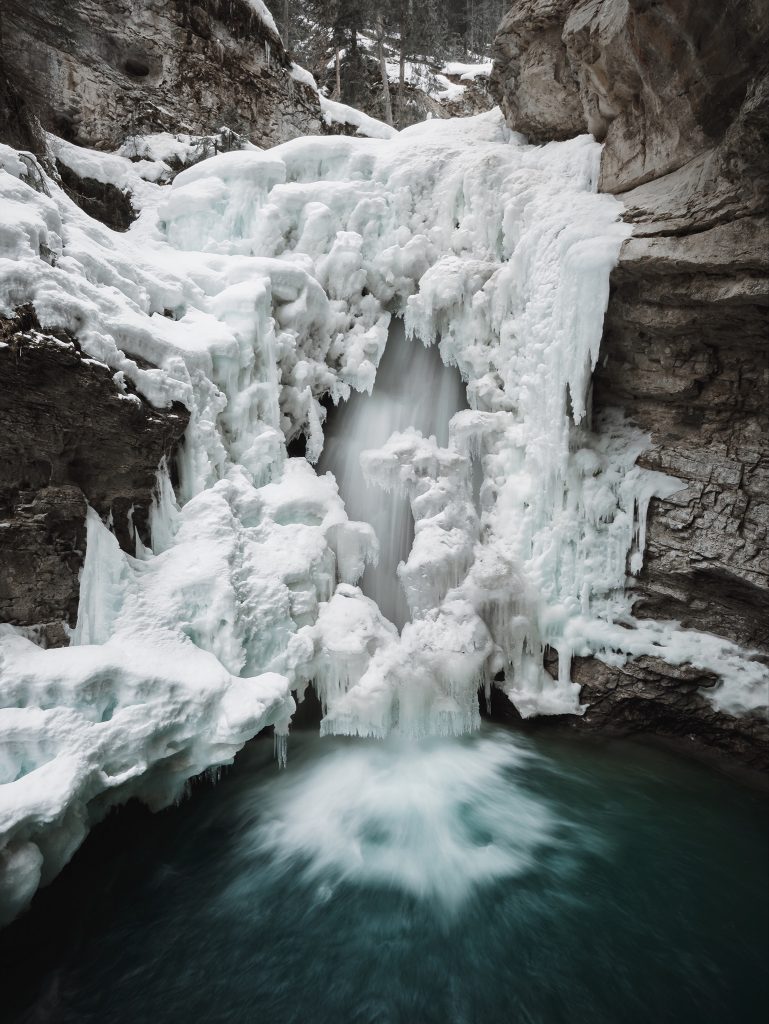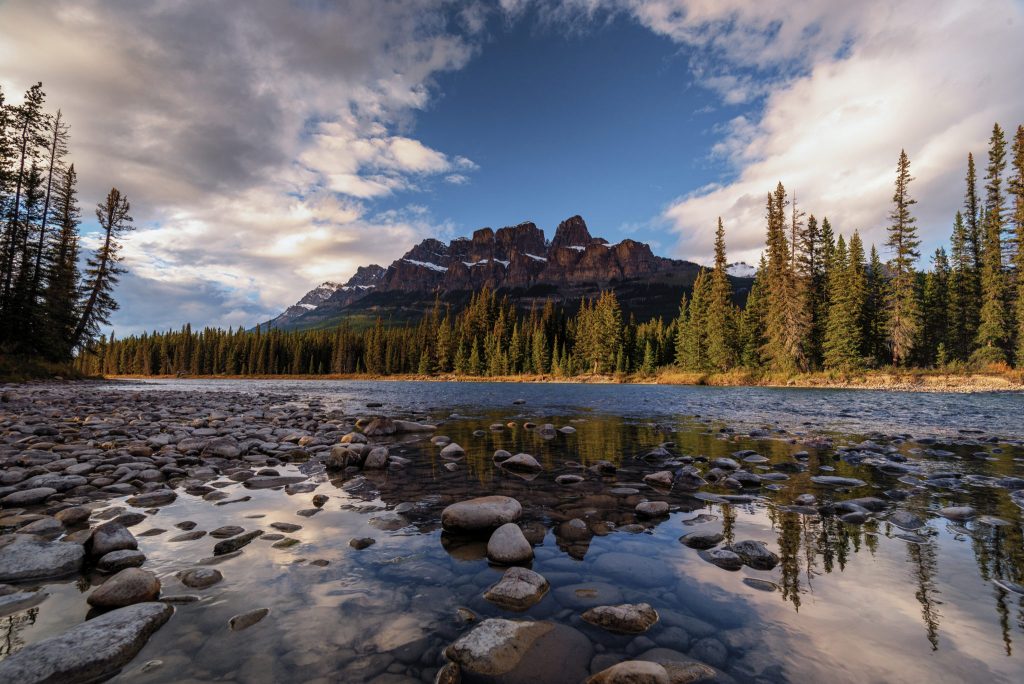
There aren’t many places in North America that can compare to the Canadian Rockies’ beautiful mix of snow covered mountains, stunning glacier-fed lakes, plentiful waterfalls and diverse wildlife. Few places allow you to just press the shutter and end up with a stunning photo, but that’s not entirely out of the question when you visit this magical region. Not only are each of these awe-inspiring in their own right, they have different visual dynamics at different times of year. If you’re planning your first trip to the Canadian Rockies, I highly recommend focusing on the southern portion which is home to Banff National Park (as well as Jasper and Yoho). To be perfectly honest, a list like this is highly debatable as there are far too many amazing places to visit. But for the purposes of this guide, I’m going to recommend what I believe are some of the most iconic, must-see places in Banff ~ let’s get started!
If you’re planning your first trip to the Canadian Rockies, I highly recommend focusing on the southern portion which is home to Banff National Park (as well as Jasper and Yoho). To be perfectly honest, a list like this is highly debatable as there are far too many amazing places to visit. But for the purposes of this guide, I’m going to recommend what I believe are some of the most iconic, must-see places in Banff ~ let’s get started!
Moraine Lake
Often seen as as second place finisher to the area’s most well-known lake (Lake Louise), Moraine Lake makes up in more dynamic photographic opportunities. There are several hiking/walking trails that go around the lake itself, all of which are short and worth the time as they give you some nice alternate views of the lake.
Like many of the lakes in the area, canoes are available for rent but they also make exceptional foreground objects of interest. One of the key views of the lake is from atop a large rock pile at the north end of the lake ~just be careful of the moisture if going in the mornings as it can be quite slick. (51.321742, -116.186005)
Additional Details:
- There is a parking lot on the north end of the lake, not huge but it does fill up quickly. Get there early to find a space and avoid the crowds.
- The access road closes early due to winter snowfall, sometimes as early as October. It typically won’t reopen again until May so timing is key here.
Lake Louise
There’s not a whole lot so say here ~ Lake Louise is unbelievably cool and is likely the crown jewel of Banff National Park. Twice the size of Moraine Lake, the view of the lake and its turquoise water with the mountains in the distance is not to be missed. A wide angle lens can help with your composition as can a graduated ND filter to help balance the often stark contrast of the lake/mountains with the sky. As is true for most of the lakes in the area, the summer months is when you’ll see the turquoise water color. Unfortunately, that is also when you’ll experience the most tourists ~ it’s almost obscene the number of people that crowd the banks of this lake during peak season.There is also the swanky Fairmont Hotel right by the lake as well as canoe rentals. Also, keep in mind that the snow and ice from the previous winter usually won’t thaw until May or June so time your visit accordingly. (51.417660, -116.216929)
Lake Minnewanka 
Lake Minnewanka is without a doubt the largest lake in Banff National Park. From red Adirondack chairs to canoe rentals, this lake has it all. You can do everything from hiking, walking, fishing, swimming here…you can even rent motor boats if you choose! Take some time to explore along the shoreline, as the light is really nice at sunrise. The loop that passes by Lake Minnewanka puts you on a cement bridge with the lake on the right side. Shortly after crossing the bridge are two parking lots ~ be sure to arrive early if you want to get a spot. (51.247196,-115.499275)
Two Jack Lake
On the way to the aforementioned Lake Minnewanka, you will pass Two Jack Lake. There is a decent sized parking lot with bathroom facilities here and a short walk puts you at the water’s edge. Both sunrise and sunset work well for this location, and the calm water can make for some spectacular reflection shots of the mountains. If you drive past the parking lot (towards Lake Minnewanka) there is a small area off the road shoulder where you can get an alternate view of the lake from a much higher vantage point. (51.230541, -115.498174)
Johnston Canyon
There are two places worth mentioning that are situated along Bow Valley Parkway and alternate, road that runs parallel to the main Trans Canada highway. The first is Johnston Canyon. Over the thousands of years, the limestone rock has eroded away and given way to several waterfalls, canyons, and caves, all of which are packed into a small area making it easily accessible for photographers wanting to get a wide variety of shots without taking up half the day. The main attraction here is an easy 3-4k m hike that takes you to the canyon’s Lower Falls about a 1km in and then the Upper Falls another 2.7km later. It’s also fairly easy to go off trail at certain sections and get close to the running water.
As you hike the trail, you’ll see pools of cool glacier water, several plunging waterfalls and get sprayed by the cool mist in the summer ~ all while walking along a well-manicured trail that intersects on and off with a carefully constructed set of metal walkways attached to the canyon walls. During the winter, the experience is entirely different: the roar of the water is gone, replaced by the tranquility of ice and snow. The falls become frozen and make for dramatic and interesting subjects for your photos. If you plan to see this area in the winter, crampons are an absolute must as the much of the trail can be covered with ice. (51.245748, -115.839925)
Castle Mountain Junction
At roughly the half way point between the town of Banff and Lake Louise is a far lesser known spot, Castle Junction. There is a point where the Trans Canada Hwy intersects with Hwy 93, and it is along this stretch of the Bow River that you’ll find Castle Junction. From this location, you can get an unobstructed view of Castle Mountain, one of the area’s most recognizable peaks. What makes this spot unique is the lack of foot traffic due to its isolated location, as well as it’s clear unobstructed view of the mountain, which is difficult to photograph due to it’s close proximity to the water and tree cover at the base. Photographically, this place is good all year round, at almost any time of day. The majestic mountain in the background, low and manageable water level of the Bow River and an assortment of rock sizes laying around for foreground interest make for a solid composition. In the winter the tops of the rocks can end up being covered in snow which looks even more amazing.
To get to this location you’ll need to travel northbound on the Trans Canada highway and exit at the intersection on Highway 93, cross an old metal bridge, and park in a tiny parking lot on the right side of the road immediately after crossing the bridge. From there, go back across the bridge (heading back towards the freeway) and you’ll come across a slight slope on the right that leads to a barbed wire gate. It’s not difficult to get around as many people just slide underneath it. Once inside, you’ll be on the banks of the river with a clear view of the mountain. (51.266560, -115.926661)
Honorable Mentions:
-Peyto Lake
-Vermillion Lakes
-Bow Lake





